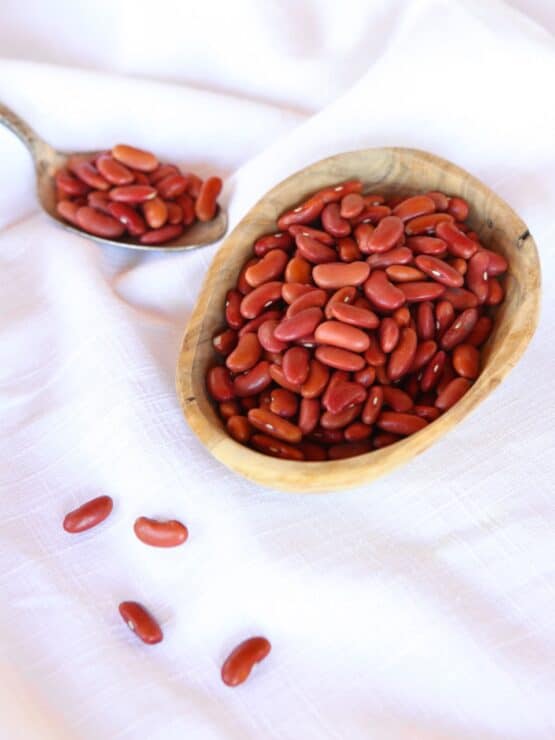
How to Cook, Soak and Freeze Red Kidney Beans – Learn how to cook dried red kidney beans to prepare them for use in recipes. Includes storage and freezing techniques.
This tutorial will teach you how to cook, soak, prepare and freeze red kidney beans for use in recipes. Red kidney beans are believed to have originated in Peru over 8,000 years ago, along with several other beans known collectively as “common beans.” They were cultivated in Louisiana during the 17th century and planted by Spanish settlers. When Haitians arrived in New Orleans, red beans and rice became a popular dish in the regional cuisine. Red beans hold up well during cooking, making them perfect for simmered dishes.
Kidney beans should always be well cooked. It is important to note that you should never cook raw, dried kidney beans in the slow cooker. According to the F.D.A., red kidney beans contain high concentrations of Phytohemagglutinin:
“The syndrome is usually caused by the ingestion of raw, soaked kidney beans, either alone or in salads or casseroles. As few as four or five raw beans can trigger symptoms. Several outbreaks have been associated with “slow cookers” or crock pots, or in casseroles which had not reached a high enough internal temperature to destroy the glycoprotein lectin. It has been shown that heating to 80°C may potentiate the toxicity five-fold, so that these beans are more toxic than if eaten raw. In studies of casseroles cooked in slow cookers, internal temperatures often did not exceed 75°C.”
Beans and legumes are a great source of fiber, protein, fiber, iron, B vitamins, potassium, magnesium and many other beneficial nutrients. I prefer dried beans over canned for several reasons. They are more economical than canned beans and do not contain the unnecessary additives like sodium.
The method below uses a ratio of 10 cups of water per pound of dried kidney beans. If you plan to use a different amount, please adjust accordingly using this ratio. You may notice that the color of dried kidney beans that have been cooked on the stovetop are lighter in color (more pink) than canned versions (which tend to be deep red in color). I believe this has something to do with the cooking method involved. Either way, it’s not a cause for concern.
Recommended Products:
We are a participant in the Amazon Services LLC Associates Program, an affiliate advertising program designed to provide a means for us to earn fees by linking to Amazon.com and affiliated sites. As an Amazon Associate I earn from qualifying purchases.
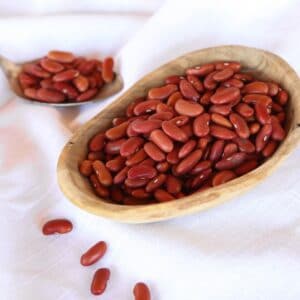
How to Cook, Soak and Freeze Dried Red Kidney Beans
Ingredients
- 1 pound dried red kidney beans (please refer to instructions below if you plan to cook more or less)
- 20 cups water, divided
- salt (optional)
NOTES
Instructions
- The method here uses a ratio of 10 cups of water per pound of dried red kidney beans. If you plan to use a different amount, please adjust accordingly using this ratio. In a large pot or bowl combine the beans with water at a ratio of 10 cups of water per pound of dried beans. Soak the beans in the water, either overnight at room temperature or through the quick soak method (outlined below). Soaking speeds up the cook time, helps the beans to cook more evenly, and makes them easier to digest.Once the beans have soaked, you will notice that they have increased in size, indicating that they have absorbed moisture.

- To quick soak the beans, you will need 1 hour. Place the kidney beans into the bottom of a large pot and cover with water. Bring beans to a boil. Let them boil for 3 minutes, then remove from heat. The beans will expand, so make sure you cover by several inches of water to allow for this. After soaking using either method, drain and rinse the beans.

- Place the beans in a large pot and cover again with the same ratio of fresh water. It is important to use fresh water for boiling; the soaking water contains oligosaccharides, released from the beans during soaking, that can lead to digestive discomfort. Add salt to the cooking water if desired to give the beans more flavor (I use about 1 tablespoon salt for every 10 cups of water). Place on the stovetop and bring to a boil, then reduce to a simmer. Simmer for 45 minutes, or until you reach desired tenderness. I recommend stirring the beans a few times throughout the cooking process so that the beans at the bottom of the pot don’t soften before the beans at the top.

- Once the beans have finished cooking, drain them in a colander.

- If freezing, allow the beans to cool, you can speed this process by rinsing them with cold water. Then transfer them to a freezer safe container, I recommend resealable bags, and freeze until needed. I like to measure out 1 ¾ cups of beans in each bag, which is equivalent to the amount in a standard sized can. They will keep in the freezer for up to 6 months.

- When ready to use your frozen beans, remove the beans from the freezer and thaw. They can be reheated on the stovetop, added to soups and stews or used however you would use canned beans.

Nutrition

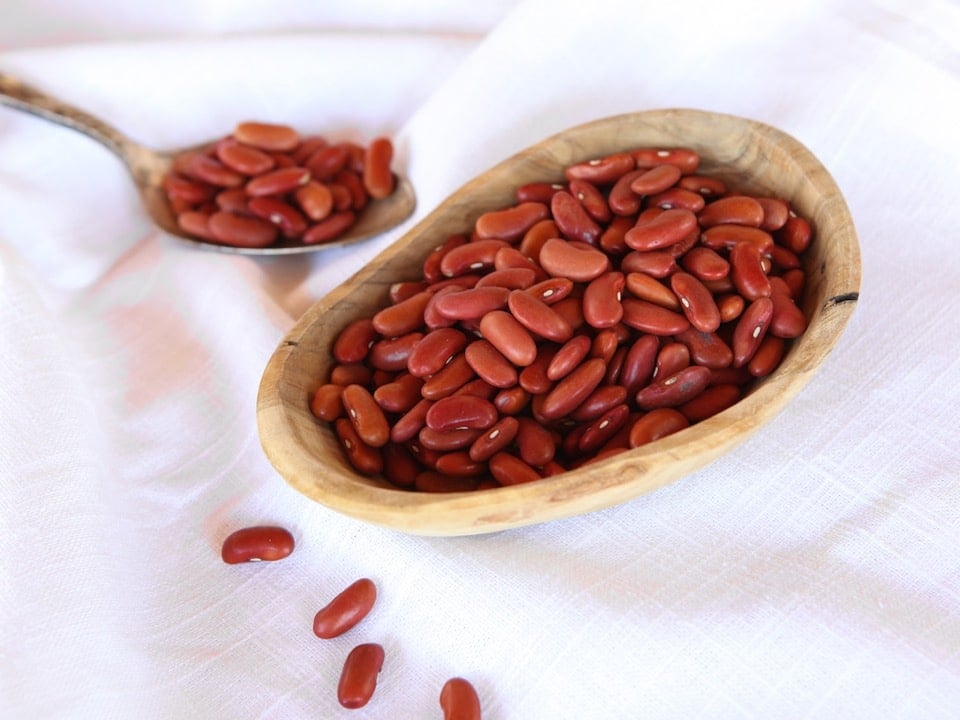
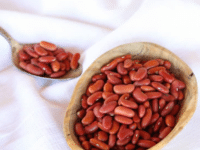
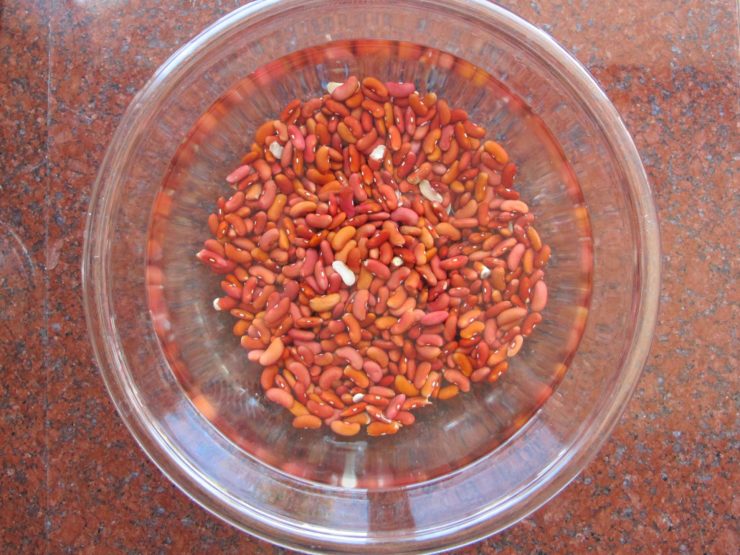
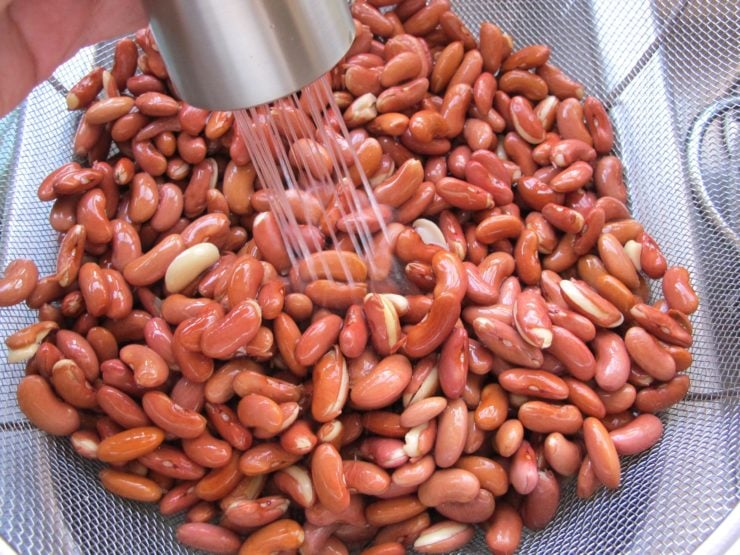

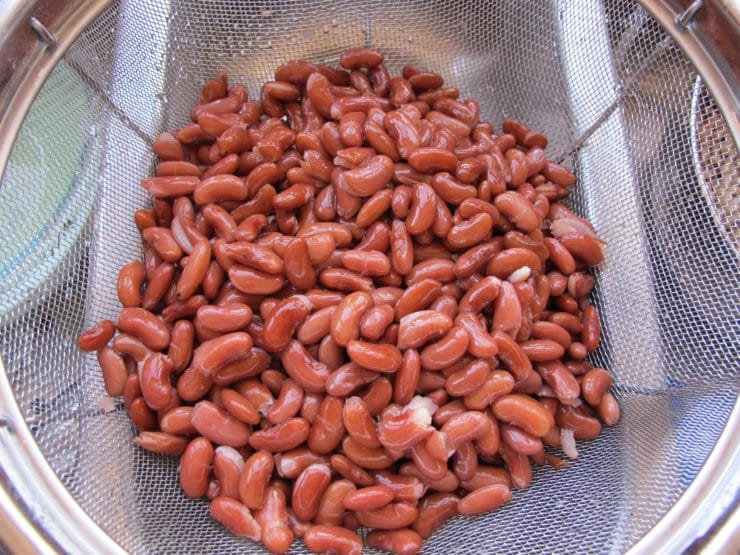
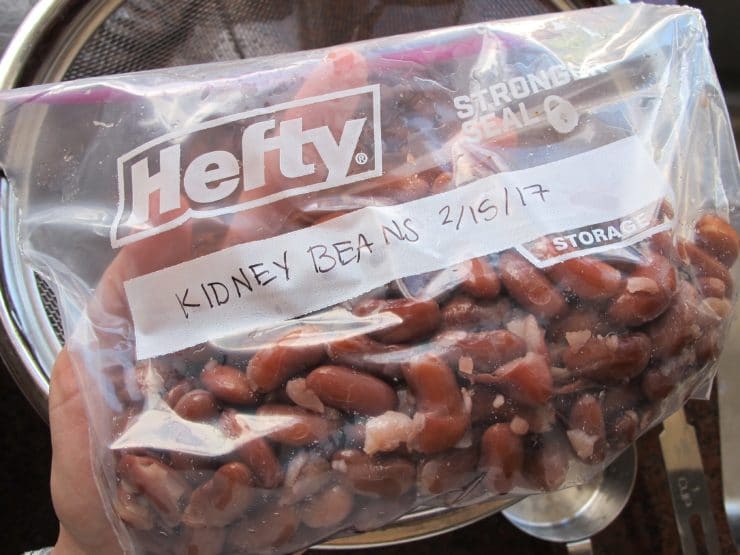
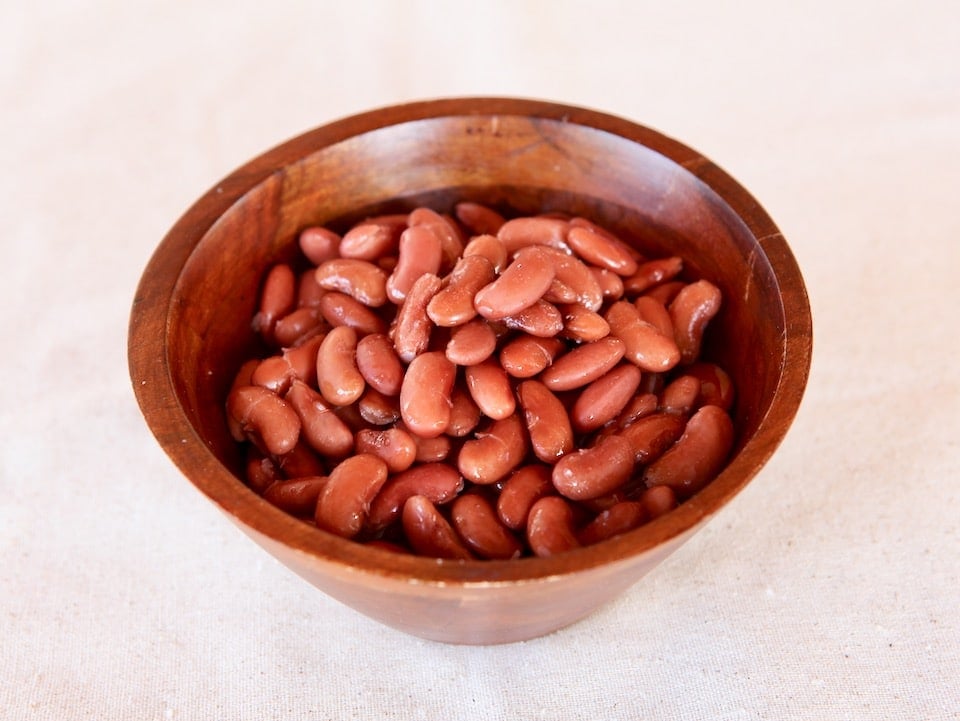


This is really helpful. Thank you so much x
Thank you for sharing this recipe. I have been wanting to feed my toddler some beans because of its nutritional benefit but have been wary of using canned beans because of its additives. Now i can move on using fresh beans to cook for my little one.
your article is very good. I can’t wait to try it at home with my family. thank you for sharing the recipe with me. I’m waiting for your next article.
I used my new slow cooker for the first time today and had to throw away my stew after 2 hours of cooking when I found out about the toxins! I started over, using this recipe and boiled the beans for 3 minutes as per the quick soaking method. But then I saw elsewhere you should boil for at least 30 or 10 minutes. I’m confused… I’ve wasted a lot of ingredients already so really hope my stew doesn’t turn out poisonous :/
Soaked kidney beans should not be used in the slow cooker, as noted in the blog post above. Though the beans are boiled briefly, the “quick soak” method does not cook them. I would recommend, rather than throwing out the ingredients, to simply transfer to a pot and cook on the stovetop instead, making sure you boil then simmer the mixture to cook it.
3 min boiling is for Quick Soak method. If you soak overnight, no need to boil for 3 min.
Cook for complete Boiling, Simmer as explained.
Thank you so much for making this information available and easy to find. There is a lot of misinformation about preparing Red Kidney beans and this was well informed and helpful! I notice many here do not seem to read all the information before asking a question which you already answered in the post. lol
i have fresh kidney beans here and i can not find the right answer i want to know if i can used fresh kidney beans for a kidney bean salad. and how long do i cook them for the salad?
Cook them using the instructions above, then cool, before adding to the salad.
Enjoyed reading your article!
I don’t see the serving size mentioned anywhere in it , though. And I do not see any serving size listed on the nutrients list.
How much constitutes one serving?
Sincerely,
Linda
Hi Linda, as noted in the recipe 1 pound (16 ounces) of dried kidney beans = 2 pounds 7 ounces (39 ounces) cooked beans, or a little over 6 1/2 cups of cooked beans. The recipe states 13 servings, so that would equal 1/2 cup per serving. 🙂
Thank you so much- just made a batch 🙂 im happy that I can make them rather than use canned ones. x
Thank you for sharing this information. It’s going to make it a lot more easier for me – bulk cooking and storing. I’ve always loved cooking with red kidney beans but never fancied canned ones. I’ve always avoided using salt because of ‘the myth’ hardning. Can kosher salt be used?
Thanks. Tyna.
Thank you this is very helpful. I have to change my diet to high fibre foods and recently have been looking for foods and recipes . Thanks again the info is very helpful especially how to freeze. Regards. D Marran.
Can you use the same recipe for black beans?
Hi Chana, here is my tutorial for black beans: https://toriavey.com/how-to/how-to-soak-cook-and-freeze-dried-black-beans/
Can you please advise if the cooking method for white kidney beans is the same as for red?
Hi Andi, Tori’s assistant Ashley here. The cooking methods for white and red kidney beans are not the same.
Great recipe! Thank you! I didn’t know about the dangers of just boiling dry kidney beans so I was very happy for the instructions. I am always suspicious of canned food which usually has ridiculous amounts of sodium, not to mention all the random chemicals that can possibly leach into the food from the lining of the can. My beans turned out to be even better than canned, without the chemicals and half the price!
I soak kidney beans overnight then discard the water and rinse in clean water. My question is – can you use the water that you cook the kidney beans in – I like to cook them in veg stock and then use the liquid as a base. Thanks. Rosie .
Hi Rosie, Tori’s assistant Ashley here. Yes, you can use the water that the beans are cooked in, but you should always discard the soaking water.
Hi Tori, trying to cook kidney beans for the first time – thanks for the useful information from your website! Read somewhere that beans should not be cooked using a slow cooker. Does this apply to kidney beans?
Hi Lea! Actually, I think kidney beans are the only ones you are not supposed to slow cook (more details in the post above). Other beans should be just fine.
If using the beans in a crockpot recipe – do you still have to boil them, or can you go right from rinsing to the crockpot recipe? I do not want to double cook if I am not supposed to.
Celine, it depends on the type of bean and the recipe. For most types of beans, the recipe should say within the body of the recipe whether or not they should be rinsed, soaked or cooked. For kidney beans, the preparation is a bit different (and not all recipes mention this) – they can contain a toxin if not properly prepared. For kidney beans, the FDA recommends soaking for at least 5 hours, discarding the water, and boiling in fresh, clean water for at least 10 minutes, before using a slow cooker.
Hi – thanks for your cooking instructions. Are you sure to add salt to the cooking water. I heard that by adding salt to the cooking water will take longer to cook and can make them hard?
What do you think
Regards
Ingrid
Actually, that myth has been debunked by test kitchen scientists. I’ve found that the salted water makes the end product taste better. But, it’s totally optional– if you prefer to cook without feel free!
Very helpful. Easier than I imagined; thank you. I made a large batch and froze them in 3/4 C (can-sized) portions as you suggested. I won’t be buying any more canned beans!
I think she said 1 3/4 cups equals a can. Which makes sense being as a can of beans is usually between 14-15 ozs. Thought you would like to know so you don’t just use 3/4 cups beans when your recipe calls for a can. ????
Thanks also. Great article with good info
Wow! I am soooo happy I read your article on how to cook & freeze kidney beans. I was in the process of slow cooking my kidney beans in a crock pot and I was looking for ingredients to add and I ran across your article. I was clueless to the information you provided….needless to say I made some adjustments.
Terrific! This takes the fear out of using dry beans which are cheaper to buy and readily available.
I always bought canned beans, not that there’s anything wrong with that, but this explains how easy it is to use
dry beans.
Thanks,
Marshall
Yikes Myra! You are correct. Not sure how that got omitted. I updated the instructions.